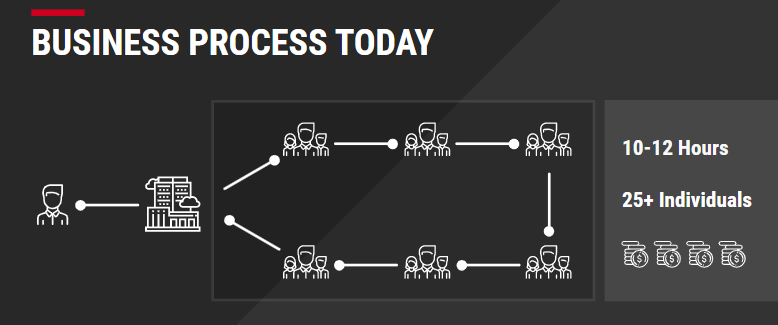Intelligent Document Processing – An Introduction
Intelligent document processing is a result of the progress in computing to eliminate repetitive tasks from the office workplace. To truly understand this concept, this article will take you through a real-life example that most of us have experienced at least once.
Let’s assume that you just got yourself a car. It’s a brand-new black Mercedes S-class, just a month out of the showroom. Driving it feels good, and you make sure that the car is clean enough to eat on top from. The car gets those heads turning, as you drive on your way to work. Your wife, your friends and your colleagues want to take it for a spin, and you relish the envy that they have for you.
One evening, on your way back from work, you stop at a traffic light. The car behind you was expecting you to jump the light, and so wasn’t prepared to apply the brakes on the car. Two seconds of miscalculation, and your shiny new black has its rear damaged because of a careless driver. Now, this makes you angry, really angry. But as per UAE law, you’re required to keep your calm and report it to the police and your insurance company. But what is the process of filing your insurance claim? Have you ever asked how many man hours are required to process an insurance claim, with all the verification and data collection required?
This is where Intelligent Document Processing comes in.
How does Intelligent Document Processing help?
When you submit your claim for reimbursement, a claims representative will contact you to collect all the relevant information. This typically includes your policy number, details about your coverage, description of the accident and the police report. Using this information, the claims department will then require a quotation from the workshop which will fix the car. Using all this information, the claims team will figure out what is the amount that is reimbursed to you.
By now, you probably understand where this article is going. This work takes considerable work and a significant number of hours, which can also run into days. This delays the processing, and therefore the reimbursement. Now consider an insurance company that processes claims by the thousands ever month. It is not uncommon that insurance companies are not able to process claims in time, and if they do manage to do this, it is because of a large workforce spending much of their time in these repeatable tasks. While we have taken the example of an insurance claim to break down the concept, every industry has processes where manual data entry and verification is still the backbone, though an inefficient one.
Intelligent Document Processing - How does it work?
Intelligent Document Processing (IDP) uses a combination of technologies which include Artificial Intelligence, Machine Learning, Natural Language Processing (NLP) and Optical Character Recognition (OCR). To continue with the example of the insurance claim processing, IDP can categorize the different documents, pull out relevant information from it, process it as per the standard business rules for claims processing and push this into the core insurance processing systems. To eliminate the number of work hours wasted on processing and verification of the claims, IDP understands the contents within a set of documents, and performs the required actions without requiring manual intervention, except in rare cases. In addition to this, the machine learning component also learns from its mistakes in time, further driving up the accuracy of the system.
To highlight the importance of this technology, it is important to understand that no two insurance claims will look the same. Documents like the police report and the insurance policy documents may have the same format each time, but this won’t be the case for quotations, invoices or other supporting documents. Because the documents themselves will contain different information each time, IDP needs to truly understand the language of the reports to apply the right business rules in each case. IDP is also capable of spotting anomalies in the information captured. This functionality allows large businesses to detect cases which deviate from normal behavior and prevent fraud cases from arising.
What industries can benefit from using Intelligent Document Processing?
Data is the backbone of the global economy. While digitization has been a common activity for businesses in the past decade, data capture, exchange and verification is still largely a manual activity. Some of the common processes include the Know-Your-Customer (KYC) process, supplier invoice processing, logistics document processing, medical information capture, loan processing and legal documents processing.
The main pain points that IDP tries to address are listed below:
- Industries that process a lot of documents, that come in various formats.
- Industries that utilize a lot of manual data entry and verification of information.
- Business processes where manual work results in data loss or error, causing liabilities to the business.
Information should be easy to access and use for all. But considering human behavior, no to humans will work with information in the same way. Instead of making humans work for the information, why not have the information work for us?
Want to know more?
Now, what can you do? If you’re interested to know more about how we can help you, fill the form and sign up for a free session!


